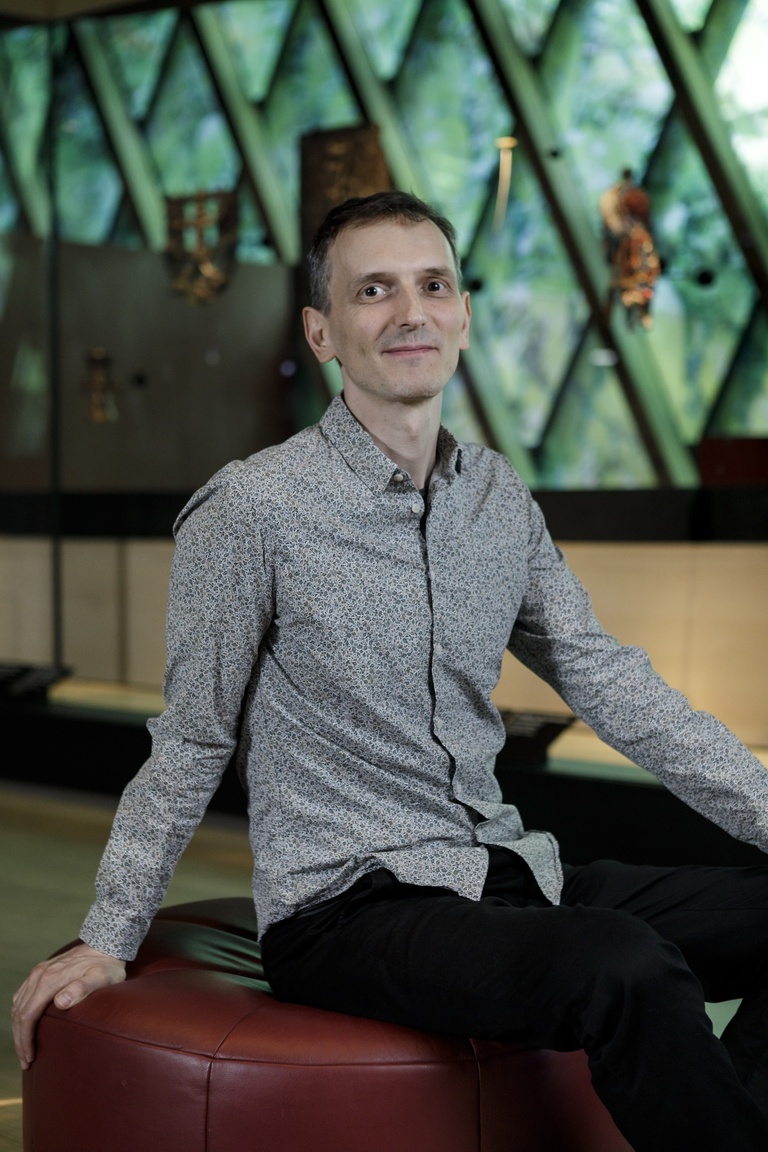
Interview with Augustin Muller
What was the initial idea for C’est toi qui donnes le son?
With Le Balcon, we began by thinking about an installation. I searched the museum's documentary collections for excerpts from non-European musicians talking about music, their relationship to sound, and their instruments. My intuition was to make the instruments in the collection vibrate by broadcasting the recorded voices of these artists. The project then became a score intended to be performed by the instrumentalists of Le Balcon, and these ideas evolved.
How?
The musicians were not only integrated into the project as performers, but also into the very design of the piece. I felt it would be interesting to interview them and integrate their voices into the electronic music surrounding the audience. It had to be done with sincerity, not seeking to replace the archives but to add a new dimension. We wanted to highlight this introspective side, which is echoed in the title.
What other influences influenced this piece?
The ability to access the research library at the Musée du quai Branly – Jacques Chirac allowed me to delve into the works and recordings of several ethnomusicologists, which fueled my thinking and also provided keys to listening and approach. The recordings and writings of Simha Arom and Gilbert Rouget, Madeleine Leclair, and Eric de Dampierre, for example, were important reading and listening experiences. I was also fascinated by other writings, notably Steven Feld's Sound and Sentiment. The author describes a ceremony in Papua New Guinea. Guests are required to perform a performance in front of their hosts, the goal being to make them cry. Steven Feld's approach to understanding these ceremonies involved both a rigorous analysis of the underlying myth and musical structures, but also composing songs himself, ultimately bringing the hosts who welcomed him to tears. I liked this dual approach, both structured and empirical, drawing on the intellect as much as the emotional. We could also cite Robert P. Armstrong, who analyzes works of art from the perspective of what they provoke in us. This is somewhat the approach that guided us for this project around the museum's instruments.
You have long been interested, particularly with the composer Pedro García-Velásquez, in the acoustics of spaces. How did this influence your way of working on this project?
What interested us was the idea that the place and the listening process put us in a particular state. It's not just acoustics in physical terms, but also everything that acoustics evokes in our inner memory of certain places. It's temporality that transforms us, provided we adopt an attentive listening attitude. If we manage to put the listener in the right listening state, some of the musicians' words will be received very strongly. Their words, moreover, lead us to the most expressive moment of the piece, which is the sung section.
What does it mean to you to close the piece with songs by Hildegard of Bingen?
The choice of text and the sung language was a tricky one! I began by researching texts dating from Antiquity, agnostic texts. Through numerous visits and work at the museum, I realized that the spiritual or religious aspect was ultimately unavoidable, since it was present in so many of the documents I consulted. So I looked for very ancient religious music, unique enough to appeal to everyone. In Hildegard, in what she represents and in her music, there is a shamanic and very direct, monodic* aspect. We are not specialists in early music, and this arrangement therefore leans toward the noisy, colorful side, in a way that remains strange and a little harsh. The character of Hildegard also embodies the multifaceted social role of the musician in many cultures, as she was also an abbess, a healer, a pharmacologist, and more. She is the perfect figure to complement the words of the musicians in the Balcony.
* Monodic: having a single voice (as opposed to polyphonic).